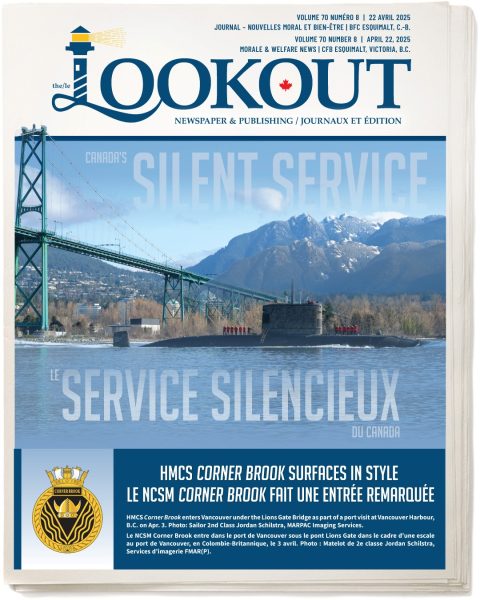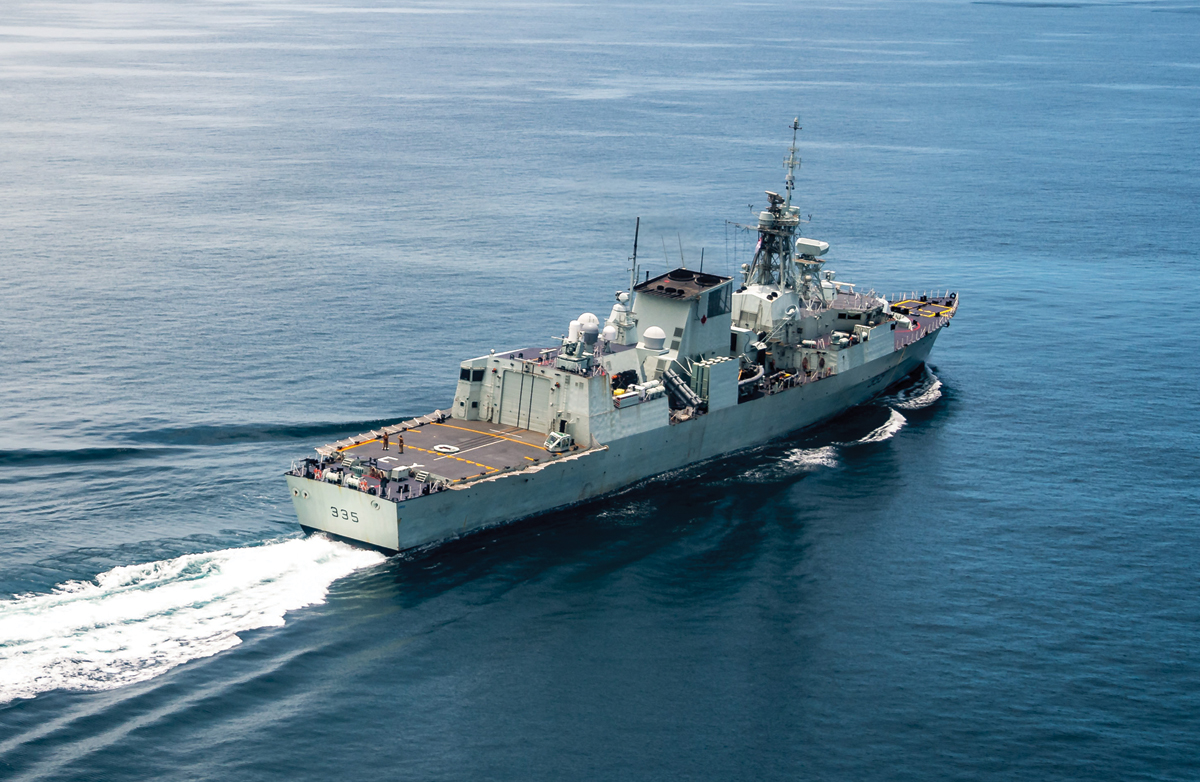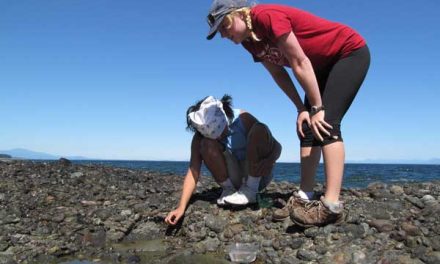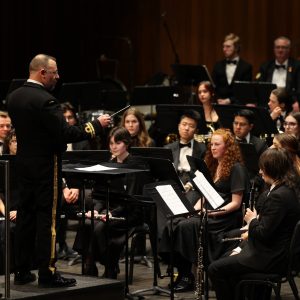Peter Mallett
Staff Writer
––
HMCS Calgary sailed out of dry dock Jan. 8 following completion of its Intermediate Docking Work Period performed by Fleet Maintenance Facility (FMFCB) Cape Breton.
The short work period, part of a five-year Tiered Readiness Program, was necessary to perform required preventative and corrective maintenance and to test the ship’s engineering and combat systems following its return home in August from a lengthy deployment.
It entered dry dock Nov. 10, receiving a short-distance tow from C1 Jetty by three Queen’s Harbour Master tugboats.
Before draining the dry dock of water, allowing the ship to settle on large blocks on the floor, Fleet Diving Unit Pacific clearance divers inspected the hull for any damage or significant wear and tear.
The work performed during the Intermediate Docking Work Period is similar in nature to a car’s routine maintenance inspection at a local garage, but on a much grander and sophisticated scale, says Lt(N) Si Tian, the ship’s Acting Marine Systems Engineering Officer.
“This dry docking period is part of a ship’s normal lifetime maintenance cycle and ensures Calgary meets required readiness for operations,” says Lt(N) Tian. “Surveys of the ship’s systems were also performed to prepare the plan for its upcoming extended work period.”
Calgary will undergo a more comprehensive refit in 2023.
The work
The lion’s share of the preventative and corrective maintenance was performed by FMFCB’s production and engineering shops, with assistance from the ship’s company and outside contractors.
The ship’s gas turbines, ancillary and auxiliary systems, and the two main electrical switchboards and its multiple breakers were tested.
Repairs were made to some leaking valves, a regulator malfunction in the ship’s freshwater system, and the ship’s diesel generators that supply electricity when at sea.
Outside contractor Canadian General Electric did corrective maintenance to the ship’s gas turbines, while Lockhead Martin inspected Calgary’s radar equipment.
Another regular on the maintenance list is the combat systems.
“A major evolution that was essential was the removal of almost all of the ammunition aboard Calgary and then performing a process called Certifying Free From Explosives,” said Lt(N) Joseph Horobetz. “As you can imagine, a warship is full of explosives and material that can cause risk in the docking evolution and it was essential that it was certified removed.”
The ship’s sonar dome was removed by clearance divers and inspected by FMFCB staff, and the Canadian Towed Array Sonar System was removed by FMCB staff from a barge before it entered dry dock.
Tight Timeline
The timeline for dry dock periods is normally tight but was made more difficult by a number of factors, says CPO2 Lee Richardson, FMFCB’s Acting Project Leader for Calgary.
“Despite losing time to a series of snowfalls, needing to schedule work differently due to COVID-19 posture, supply line slowdowns, and the holiday break, this work period went extremely well even though the ship was a lower priority for
maintenance work within the fleet.”
With the work completed, Calgary was returned to its spot by the jetty by QMH tugs.
Ship and crew will conduct sea trials and exercises between February and March. The refit is part of the navy’s Tiered Readiness Program for its 12 frigates to ensure they remain the backbone of the fleet until the delivery of Canadian Surface Combatant Vessels.
––––













